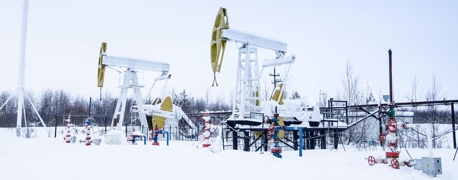Permian Basin Oil Boom: America's Most Dangerous Border

Before COVID, the Permian Basin oil boom drove the economy of small towns to heights they weren't prepared for, so the area’s infrastructure struggled to keep up with the sudden influx of workers, families, and businesses. As a continuous stream of workers flowed through the Permian Basin, the area’s highways, housing, emergency services, and environmental air monitoring stretched thin to meet the demand.
COVID, the lower demand for oil, and the availability of renewable energy sources brought the Permian Basin oil boom to a screeching halt in 2020….but just a year later, rising oil demand and higher prices have extended the life of the massive economic boom.
So what's been the impact of the most transformative economic shift in Texas?
The Permian Basin: Rapid Growth for Small Cities
Small towns experienced the most radical changes. Carlsbad, New Mexico had a population of about 40,000 people just a few years ago. Now, rapid growth in the town’s economy nearly doubled the population to 75,000. The city is surrounded by RV parks to meet housing demands. Hotels that once lodged tourists for the Carlsbad Caverns now house temporary workers. Midland-Odessa’s population was just over 235,000 people as of the last census. Recent estimates place the population at over 350,000.
U.S. 285 connects the Midland-Odessa area and the New Mexico towns which dot the Permian Basin. The two-lane road has earned a very ominous name from the truckers who use it regularly: Death Highway. When travelers depart on this road, they part by wishing each well with the phrase “Stay alive on 285.”
In a comment to The Houston Chronicle in 2018, truck driver Joe Gomez revealed that he turns to the only thing that he can rely on when facing a trip down U.S. 285: prayer. The driver regularly sees accidents and has almost been in a few himself. “It’s very dangerous out here, and it’s just getting worse and worse with the growth,” Gomez said. “A lot of people are getting killed when they’re not getting enough sleep and just trying to drive back home.”
The Problems of Rapid Growth
According to statistics collected by state and county officials, about 450 traffic fatalities occur annually throughout the New Mexico/Texas region in the Permian Basin. John Waters, the executive director of economic development for Carlsbad, acknowledges the difficult situation the city faces with its resources. However, he praises the economic growth that the Permian Basin’s boom has brought to Carlsbad.
“I would rather be fighting the problems of climbing up a mountain than falling off the other side,” Waters said. “We see ourselves as a young Midland. We’re not afraid of growth. We’re a lot like Texas.”
However, The Houston Chronicle found that not all residents are welcoming the region’s oil boom. A group of New Mexico citizens is speaking out against the rapid growth of small towns and cities. They argue that their growth is sending billions of dollars of revenue to the state while destroying highways, polluting the air, and placing residents in danger.
Rev. Dave Rogers is one of these concerned citizens. He told The Houston Chronicle that, “There’s this feeling that we’re in this sacrifice zone. I want to put gas in my car, but I don’t want to have to lose my life for the privilege.”
Sudden Reversals Led to Economic Collapse
In response to the Permian Basin oil boom, cities like Carlsbad made substantial investments into building new housing, schools, roads, and more. With the influx of workers and their families, the investment was a no-brainer: people needed shelter and infrastructure. Pecos saw a population boom and put $115 million toward a new hospital and $17 million toward a recreation center.
But then 2020 happened. A combination of COVID and oil supply wars with OPEC drove down the demand (and price) of oil globally, which made drilling unprofitable.
Almost overnight, the influx became an exodus. Entire companies dried up, leaving workers unemployed in a town that suddenly had no jobs. According to the Wall Street Journal, unemployment in the region spiked from 2.1% to 13.4%. Rent dropped, but it didn't help—entire businesses had sprung up to service the massive labor pool that had shown up overnight. Now that oil businesses had left town, restaurants, barbers, and even schools were left struggling to survive.
The only places that saw an increase in 'customers' were local food banks. The West Texas Food Bank went from distributing 550,000 pounds of food a year to 900,000 pounds—nearly double. Meanwhile, nearby restaurants like Pody's BBQ lost 30% of their sales and had to switch their menu to cheaper items to accommodate the locals who were left.
The Oil Boom Has Returned—But For How Long?
In October 2021, Bloomberg reported that Permian Basin drilling would return to pre-pandemic highs (and this would remain consistent through 2022). That signals a return to the hot job market, expansions, and business revenues of 2018. This will also allow cities to continue funding highway safety projects and more roads to accommodate truckers and local motorists alike. However, there's no telling how long the boom will last.
Cities like Midland, Odessa, Pecos, and Fort Stockton have experienced multiple booms and busts over the decades. Many locals (and local businesses) know how to survive. But for individuals and cities alike, it's hard to build for the future when things can change overnight.
Regardless of how this latest boom cycle goes, oil drilling companies have an obligation to make things right when their trucks or employees cause life-changing accidents. More trucks on the road will mean more accidents and fatalities—history tells us that. Whether or not it changes will depend on whether injured workers and residents will hold companies accountable for dangerous or negligent behavior.
If you were injured in an accident in the Permian Basin, speak with our Midland oilfield injury lawyers in a free consultation. Call (888) 493-1629 today.
- Categories


